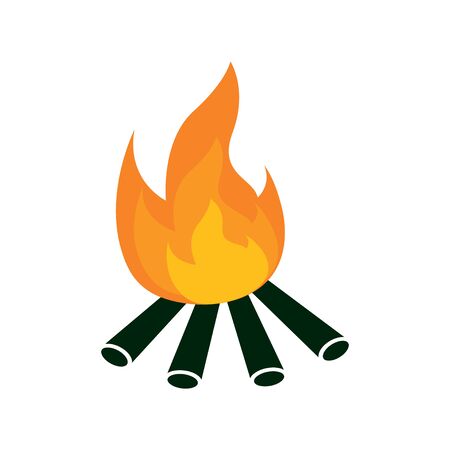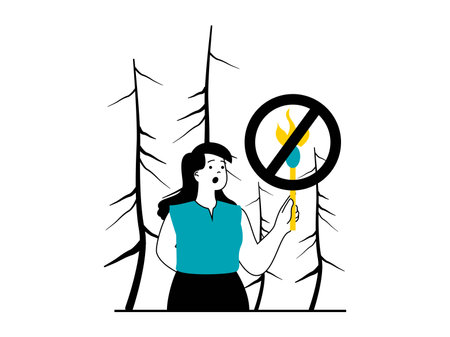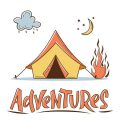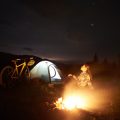Understanding Fire Restrictions and Local Regulations
Before you strike a match and build that cozy campfire, it’s super important to understand the rules and regulations that apply to campfires in the area you’re visiting. Fire safety isn’t just common sense—it’s often regulated by local, state, and federal laws to help prevent wildfires, especially during dry seasons.
Why Fire Regulations Matter
Campfires can be a great part of the camping experience, but they also pose serious risks if not handled properly. Wildfires caused by unattended or poorly managed fires can lead to devastating damage to forests, wildlife habitats, and even nearby communities. That’s why government agencies set fire restrictions based on weather conditions, drought levels, and other environmental factors.
Types of Fire Restrictions
There are different types of fire restrictions you might encounter depending on where youre camping. Here’s a quick breakdown:
| Restriction Level | Description |
|---|---|
| No Restrictions | Campfires are allowed in designated areas following standard safety guidelines. |
| Stage 1 Restrictions | Fires may only be allowed in developed campgrounds with metal fire rings; no open fires elsewhere. |
| Stage 2 Restrictions | No campfires permitted at all; only propane or gas stoves with an on/off switch are typically allowed. |
| Total Fire Ban | No open flames of any kind are allowed, including stoves, grills, and smoking outdoors. |
How to Check for Current Restrictions
The best way to stay informed is by checking with official sources before your trip. Heres how:
- Local Ranger Stations: Call or visit the nearest ranger station for up-to-date info on fire conditions and restrictions.
- Park Websites: National and state parks usually post current fire status on their official websites.
- Fire Restriction Maps: Some states offer interactive online maps showing current restriction zones.
- Forest Service & BLM: The U.S. Forest Service and Bureau of Land Management regularly update fire safety alerts for public lands.
Helpful Resources
- U.S. Forest Service Website
- Bureau of Land Management (BLM)
- National Park Service (NPS)
- FireRestrictions.us – Nationwide Updates
Quick Tip:
If you’re unsure whether campfires are allowed where youre going, play it safe—skip the fire or opt for a portable gas stove until you confirm its okay. Safety first!
2. Choosing the Right Fire Pit Location
Picking the right spot for your campfire is one of the most important steps in staying safe and following campground regulations. Whether youre camping in a national park, a state forest, or on private land, choosing the correct location helps prevent wildfires and protects both you and the environment.
Why Location Matters
A poorly placed fire pit can be dangerous. It may cause flames to spread to nearby tents, dry grass, or low-hanging branches. Following these guidelines will help ensure your campfire stays controlled and safe.
Key Factors to Consider
Before building your fire, take a few minutes to look around your campsite and evaluate the area. Heres what to keep in mind:
| Consideration | What to Look For |
|---|---|
| Distance from tents and gear | Keep at least 15 feet between your fire pit and any tents, chairs, backpacks, or other flammable items. |
| Vegetation | Clear away dry leaves, grass, pine needles, and other flammable materials within a 10-foot radius of the fire site. |
| Overhead space | Avoid areas with low-hanging branches or tree canopies directly above where sparks could catch fire. |
| Wind conditions | Select a sheltered area that blocks strong wind gusts which can blow sparks into surrounding brush or tents. |
| Fire ring availability | If youre at an established campground, use designated fire rings or pits whenever possible—theyre built for safety. |
Pro Tip: Use Existing Fire Rings
If youre camping at a developed site like those found in U.S. National Parks or Forest Service campgrounds, always use existing fire rings. Not only are they safer—they’re often required by campfire regulations. Creating new fire pits can damage natural areas and violate park rules.
When in Doubt, Ask a Ranger
If you’re unsure whether your chosen spot is safe or allowed for fires, check in with a park ranger or campground host. They can give you up-to-date information on local fire restrictions and help you find an appropriate location for your campfire.
Remember:
- Never build a fire during high wind conditions.
- Avoid setting up fires on slopes—flames can move uphill quickly.
- Stay updated on fire bans or red flag warnings in the area before starting any fires.
Choosing the right spot makes all the difference when it comes to enjoying your campfire safely. Take the time to evaluate your surroundings—it’s worth it for both fun and safety!

3. Building and Maintaining a Safe Campfire
If youre new to camping, knowing how to safely build and manage a campfire is super important—not just for your safety, but also to protect the environment and follow campground rules. Here’s a simple step-by-step guide to help you build and maintain a safe campfire during your outdoor adventure.
Step 1: Check Fire Regulations
Before striking a match, always check with the local ranger station or campground host about current fire restrictions. In some areas, fires may be banned due to dry weather or wildfire risk.
Where to Find Fire Regulation Info:
| Source | What Youll Learn |
|---|---|
| Campground Signage | Posted rules specific to your location |
| U.S. Forest Service Website | Fire bans and regional updates |
| Ranger Station or Visitor Center | Current conditions and safety advice |
Step 2: Choose the Right Spot
Select a designated fire ring if available. If not, pick a spot at least 15 feet away from tents, trees, shrubs, or anything flammable. Make sure the area is clear of dry leaves, pine needles, and low-hanging branches.
Step 3: Gather Your Materials
You’ll need three types of materials to start your fire:
| Material Type | Description | Examples |
|---|---|---|
| Tinder | Catches fire easily; used to start the flame | Dry leaves, newspaper, cotton balls with petroleum jelly |
| Kindling | Small sticks that help grow the flame | Pencil-sized twigs or small branches |
| Fuelwood | Larger pieces of wood that keep the fire going | Splits of dry hardwood like oak or maple |
Step 4: Build Your Campfire Structure
The Teepee Method (Great for Beginners):
- Create a small pile of tinder in the center of your fire ring.
- Arrange kindling around it in a teepee shape, leaving space for air circulation.
- Add fuelwood in a larger teepee shape over the kindling once it starts burning well.
The Log Cabin Method (Longer Burn):
- Create a small teepee of tinder and kindling in the center.
- Stack two pieces of fuelwood parallel on opposite sides of the teepee.
- Add another layer on top in a crisscross pattern, like building Lincoln Logs.
Step 5: Light Your Fire Safely
- Use a long-reach lighter or match to light the tinder from several points.
- Avoid using lighter fluid or gasoline—these are dangerous and unnecessary.
- Stay close while the fire catches and begins to grow. Never leave it unattended.
Step 6: Maintain Fire Safety While Burning
- Keep your fire small and manageable—no bigger than necessary for cooking or warmth.
- Always have a bucket of water and shovel nearby in case things get out of hand.
- Don’t burn trash, plastics, or food scraps—they can release harmful fumes and attract wildlife.
- Watch children and pets closely when near the fire.
Step 7: Extinguish Completely Before Leaving
- Drown the fire with plenty of water—even if it looks like it’s out.
- Stir the ashes with a stick or shovel to expose hot spots and add more water as needed.
- The fire is fully out only when everything is cool to the touch—no smoke, no heat, no glowing embers.
A safe campfire means everyone gets to enjoy nature without causing harm. By following these steps every time you light up, youre helping preserve our parks and forests for future campers too!
4. Extinguishing the Fire Properly
One of the most important parts of campfire safety is making sure your fire is completely out before you leave your campsite or go to bed. Even a small ember can reignite and cause a wildfire. Here’s how to safely and effectively put out your campfire using water, dirt, and stirring.
Step-by-Step Guide to Putting Out Your Campfire
1. Let the Fire Burn Down
Allow the firewood to burn down to ash if possible. This makes it easier to extinguish all remaining embers.
2. Pour Water Over the Fire
Use a bucket or water bottle to slowly pour water over the fire, not just in one spot, but all over the ashes, embers, and any partially burned wood. Be thorough and make sure everything is wet. Listen for hissing sounds — that means the water is hitting hot spots.
3. Stir the Ashes
Use a shovel or stick to stir the wet ashes and embers. This helps expose hot spots that might still be burning under the surface. After stirring, pour more water if needed.
4. Add Dirt or Sand (If Water Is Limited)
If you don’t have enough water, use dirt or sand as an alternative. Shovel it onto the fire and mix it in thoroughly with the embers while continuing to stir. Be careful not to just cover the fire — you need to smother and mix it in so there are no hot pockets left underneath.
How Do You Know Its Out?
| Check | What to Look For |
|---|---|
| No Heat | Hover your hand over the ashes — they should feel cool to the touch. |
| No Smoke | If you see smoke, steam, or smell anything burning, its not out yet. |
| No Sound | No crackling or hissing should be coming from the fire pit. |
Why It Matters
Leaving a campfire smoldering is one of the leading causes of wildfires in many parts of the U.S., especially during dry seasons. Always take your time and double-check that everything is fully extinguished before walking away from your campsite — it’s not just about safety; it’s about responsibility too.
5. Common Mistakes and How to Avoid Them
When youre new to campfires, its easy to make a few rookie mistakes that can lead to unsafe situations or even break local regulations. Knowing what to avoid is just as important as knowing what to do. Heres a breakdown of some common errors beginners make, and how you can steer clear of them for a safe and enjoyable camping experience.
Leaving the Fire Unattended
This is one of the most dangerous mistakes anyone can make while camping. A fire left alone—even for a few minutes—can quickly get out of control due to wind, shifting logs, or nearby dry materials catching flame.
How to Avoid:
- Always have someone watching the fire.
- If you need to step away, extinguish the fire completely before leaving.
- Keep water or a shovel nearby at all times in case the fire starts to spread.
Using Inappropriate Materials
Not everything burns cleanly or safely. Using materials like trash, treated wood, or accelerants (like gasoline) can release toxic fumes or cause dangerous flare-ups.
Stick with Safe Fire Starters:
| Safe Materials | Materials to Avoid |
|---|---|
| Dry wood and kindling | Treated or painted wood |
| Paper or natural fire starters | Plastic or foam products |
| Charcoal (in grills/fire rings) | Gasoline or lighter fluid |
Building Fires Too Large
Bigger isnt always better. Oversized fires are harder to control and extinguish, and they increase the risk of flying embers starting wildfires—especially during dry seasons.
How to Avoid:
- Keep your fire small and contained within a designated fire ring or pit.
- Add wood gradually instead of piling it on all at once.
- Aim for a flame no taller than knee-height for safety and efficiency.
Ignoring Local Fire Regulations
Each campground or park may have its own rules depending on weather conditions, fire danger levels, and available facilities. Ignoring these rules can result in fines—or worse, unintentional wildfires.
How to Stay Compliant:
- Check the campfire rules on the official website of the campsite before your trip.
- Look for posted signs about fire bans when you arrive at the site.
- If in doubt, ask a park ranger or campground host before lighting any fire.
Poor Fire Extinguishing Techniques
A fire isn’t out until it’s cold. Many beginners think that once flames are gone, their job is done—but smoldering embers can reignite hours later.
Proper Way to Put Out a Fire:
- Drown the fire with water, making sure all embers are soaked.
- Stir the ashes with a stick or shovel to uncover hidden hot spots.
- Add more water until everything is cool to the touch—no heat, no smoke.
Avoiding these common mistakes will help ensure that your campfire experience is both safe and fun for everyone involved. A little preparation goes a long way when it comes to preventing accidents in the great outdoors!


